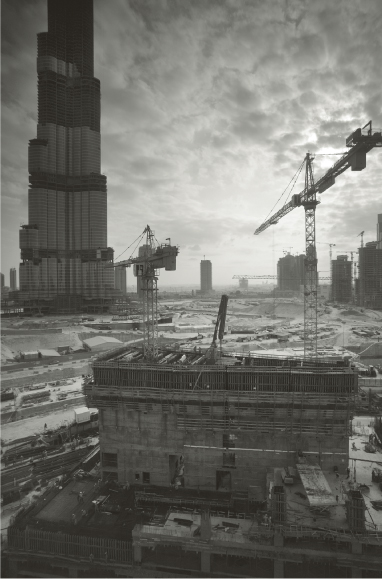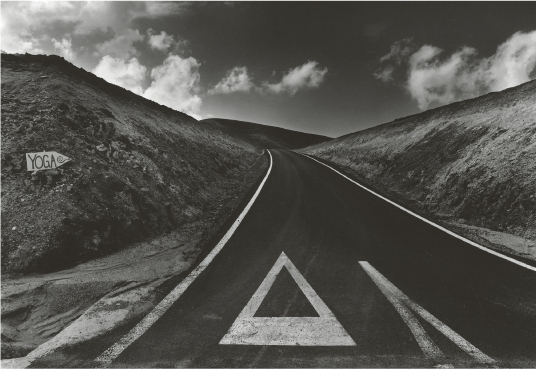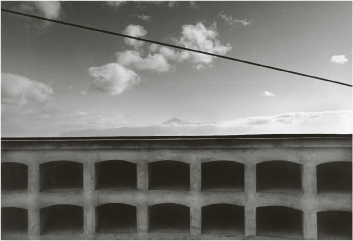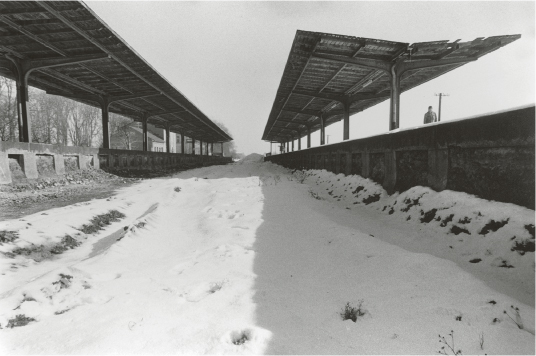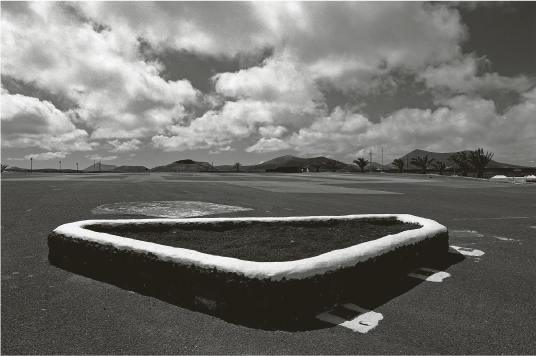12 Surreal Photography
Surrealism was an all-encompassing movement that expressed itself mostly in the visual arts starting in the 1920s. One of the founders of surrealism, André Breton, was strongly influenced by the revolutionary ideas of Sigmund Freud and thought a lot about mental associations. Freud was interested in discovering the repressions and suppressions of the human soul that were dormant and remained unrecognized in the inner self yet determined existence. The surrealists sublimated all the instinctive urges of the subconscious because they believed in the “omnipotence of the dream” (Breton) and started to express themselves creatively. Because the subconscious also expresses itself very strongly in images (dreams, for example), it goes without saying that surrealism found its strongest mode of expression in pictures as well. Dalí, Magritte, Delvaux, and Max Ernst are universally known, yet Man Ray or Moholy-Nagy expressed themselves so strongly in their photographs that surreal thoughts determined their work.
In pictorial language, the nature of surrealism is to put together things on the canvas or print that would never be manifested in everyday reality.
Such varied things are easily united in painting. Dalí invented the most varied subjects that had very little to do with reality (think of his melting clocks as an allusion to the riddle of time). Magritte, on the other hand, remained closer to reality, painting the surreal in a more subtle way. In one canvas, for example, he united night and day, and in another painted a man who looks at a mirror but sees himself from the back. Magritte also believed that the concepts we have of objects should not be equated with the objects themselves.
However, what does surrealism mean for photography? In photography, it isn’t so easy to put together a surreal world because, after all, you are always oriented toward reality unless you create a collage with multiple exposures, or a photomontage (with the help of Photoshop, for example). If you do not want to do it that way, the art of surrealistic photography lies in tapping into reality to discover surreal moments, moods, and objects that possibly don’t belong to one another yet nevertheless can reflect the dream images of the soul. “Everyone walks toward the image carried within,” said the French photographer Edouard Boubat, as already mentioned in the beginning of this book. Every person has these inner images, which manifest themselves in the daytime and especially at night in our dreams; they are expressions of the inexhaustible source of a subconscious creativity. The art of the photographer consists of searching for and finding those places that correspond to his or her inner images.
To approach the source of the subconscious, it is especially important for a photographer to rely on intuition and invest a lot of time in this quest, in a manner similar to the way Robert Hausser expressed it (see pages 32 and 76). In this way, the photographer will find the shots that serve as counterparts to his own inner images and in doing so can express the subconscious.
Surreal photos can give the subtle impression of not belonging to this world, as if they have been dreamed, as if they led the viewer beyond the realm of known perception. Even in photographs with a touch of surrealism, objects that have nothing to do with each other in the real, logical world come together in the image and start relating to one another. Yet it is precisely because of this odd relationship that an image can lead to the depths of the subconscious. This result is perhaps comparable to Buddhist koans or mantras that seemingly make no sense, and only after you meditate on them for a long time will they lead your soul to venture to a deeper level. This level can be called metaphysical, but to what extent photography can reach this level (in the sense of Herbert List’s fotografia metaphysica) will be the subject of a special examination in chapter 15.
Following are some suitable examples of photographs that can lead to a “surreal” level of the subconscious.
Yoga
Canary Island Lanzarote is, in many ways, surrealistic because a large part of the island looks as if a volcano has just erupted. The photo in figure 12–1 gives evidence of the inhospitable world of this island that has been sliced through by a brand-new highway.
The white stripes on the asphalt contrast with the harsh, uncomfortable, and also unreal surroundings. The final touch in this photo is the small, ornate, hand-painted sign that reads “Yoga.” It fits with neither the new asphalt nor the surrounding volcanic rock and, therefore, gives the photo an even more surrealistic touch. The Yoga sign indicates a homelike world, an antithesis to the dark, merciless surroundings. However, it is above all extremely surprising because nobody would think that a comfortable place where yoga could be practiced could really exist in this environment. Black is the dominate color on this extraordinary island, as is also the case in this photo. It was important to bring out the white highway stripes in the darkroom and to increase their contrast as well. In addition, the sky had to be burned in so a “white hole” would not appear on top and the clouds could stand out dramatically from an almost black sky.
The photo was taken with an analog camera using a 20 mm wide-angle lens.
Cemetery Tombs with Volcano
The next photo (figure 12–2) was taken in the Canary Islands. “What are these dark, strange, and mysterious rectangles?” asks the viewer. They lend the image, together with the volcano protruding above them, a surreal effect. These are the tombs of a cemetery in which the dead were placed long ago, as was custom in more southerly latitudes. The photo, therefore, does not only refer to the layers of the subconscious, from which countless ideas about death have originated, but it also points to the spheres lying on the other side. We are reminded of the paintings of Italian artist Giorgio di Chirico, whose favorite subjects were the Italian totalitarian architecture premises infused with surreal effects.
This photo doesn’t drift toward something idyllic; a telegraph line runs obliquely through the sky and creates a division. Compositionally speaking, the photo has a latent folding symmetry in which the Teide Volcano in Tenerife, the island opposite La Gomera, creates the central focal point. A layer of clouds over the mountain crosses the image, moving from bottom left to upper right at about the same angle as the descending telegraph line. The intersection of the clouds and the wire lies exactly above the volcano’s summit, thereby mirroring its shape once again. The folding symmetry can be recognized in the perpendicular imaginary axis of symmetry, which runs exactly through the middle of the volcano and the middle of the crossing.
Such subtle elements give photographs a clear pictorial order and, with it, more power.
You should implement subtlety when presenting images with a surreal effect in photography because photographs always depend on the “actual reality,” unless you create an image with Photoshop, in which case the appeal of authenticity that is so essential in photography is lost.
Gate to Another World
The photo in figure 12–3 depicts two worlds that seem to clash against each other, and they are so close that the effect is surreal. Here we see the sacral world bump mercilessly into the secularized, realistic, and pragmatic world of the twentieth century. Yet in these circumstances, the gate to another world remains open. Two persons stand, so to speak, at the threshold of both worlds and hesitate to walk across the gate. Hamburg’s Nikolai church ruin stands amidst the modern architecture of the 1960s and ’70s that took no notice whatsoever of the distinguished surroundings of the huge ruin. Thus, this photo has a somewhat unreal effect, reminiscent of Orson Welles’s film The Trial, which was based on Kafka’s disturbing novel. Only in the story, it was the door of a giant office building that would open, and it led to an equally gigantic sacral space. With this, Kafka insinuated the interconnection of capital and church.
In this photo, however, it is important to note that the viewer is within the sacral space and looks out to the uncomfortable architecture from a homelike perspective. Both persons seem to come toward the viewer, but in the end they don’t dare to enter this space.
The photo was taken with a 24 mm wide-angle lens.
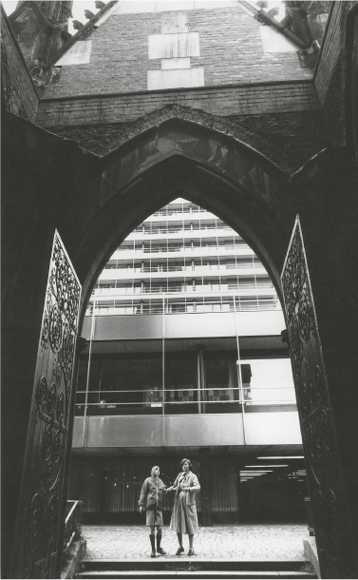
Train Station Without Tracks
The photo in figure 12–4 has a totally surreal effect: A sizable train station with two platforms, but without tracks, and yet a passenger who seems to be waiting for a train. It is a scene that apparently makes no sense at all. Reason must be put to work in this image; you want to solve the puzzle but the image does not provide an explanation, and this is precisely what makes the photo so surreal. Still, I owe the viewer an explanation: The photo shows the Jerxheim train station located on the former border with East Germany near Helmstedt. At one time, the main Hanover to Magdeburg railway line passed through here, but after the border that separated East and West Germany was built, the main line was moved. The tracks were taken out, and only a secondary line between Wolfenbüttel and the village of Jerxheim remained. This small one-platform track is on the other side of the platform on the right, so the passenger is really waiting for a small suburban train. Since then, the two platforms seen here have been demolished and replaced by a small, new platform for the train providing service to Wolfenbüttel. The Jerxheim train station seen at left in the background is now a private building. The photo also gives the impression of an isolated, abandoned place.
The photo was taken with an analog camera using a 28 mm wide-angle lens.
Absurd Concrete Surface
Th scene in figure 12–5 also has an unrealistic and absurd effect: black and white masonry on a giant tarred surface that leads into the distance. In the background, this gigantic concrete slab is bordered by a couple of power pylons, some small volcanoes, and several palm trees to the right. The image, which is devoid of any humans, elicits questions: What is the purpose of the concrete surface in the foreground that contains only black rocks? What is the giant slab used for in this deserted place? Here, free associations can be given free rein: Does the area have anything to do with the military? Is it a former landing strip or is it used in the large celebrations of the Mancha Blanca village of Lanzarote? This place does have a special meaning because in the 1930s an island volcano erupted and its lava flows almost obliterated the town. The villagers then built the patron saint a special chapel situated behind the photo.
The picture was taken with an analog camera using the 35 mm lens of the middle-format Mamiya 645 (which corresponds to a 21 mm wide-angle lens in a small-format camera). Afterwards, the negative was scanned. A gradient filter was necessary when shooting the picture so the lowlying clouds of the marvelous, backlit sky would contrast enough, but the light areas would still have definition.
View in the Distance
The photo in figure 12–6 looks surrealistic because it incorporates three viewpoints: The view toward the bottom to a skyscraper below, the view toward the front, and the view toward the top into the sky. It is a photo of an American skyscraper taken with a triple exposure. The three viewpoints are so enmeshed in one another that they remind the viewer of the inner images often seen in our dreams or imagination: One image appears to be replaced by the following one in a matter of milliseconds. The person stands before the window, raises the arm to the forehead, and either looks down or is immersed in thought. The levels of reality mutually penetrate each other. The image provides plenty of opportunities for subconscious associations: flying, jumping to the depths, levitating, infinity, and much more. It stimulates thoughts of a fantasy.
Technically speaking, in a triple exposure you must be careful to underexpose each exposure by one to two stops because three exposures must be accommodated in the gradation curve of a single negative. In principle, the multiple exposure technique is controversial in artistic photography, so I use only one example of it. The important factor is to have a pretty good idea where the different elements will be placed in the picture and what effect the composition will have when the elements penetrate each other. With digital cameras, which allow multiple exposures (e.g., bracketing), this is naturally easier because you can see the composition immediately displayed on your camera’s liquid crystal display (LCD) screen.
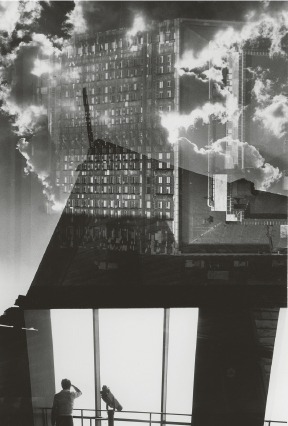
New Towers of Babel
The building on the futuristic-looking construction site in figure 12–7 has recently been finished and is now the tallest skyscraper in the world. It is located in the middle of the newly built center of Dubai. The mood of the sky makes this image appear more surreal than a “normal” photo of a construction site. The dense clouds and the way the sky becomes darker toward the top of the frame produce an almost threatening atmosphere. More enormous concrete foundations are being constructed in the foreground, and the Burj Dubai Tower at the left edge of the frame is so tall that even the super-wide-angle lens used here was not able to capture its entire height. However, this crop emphasizes the sheer size of the building by leaving it to the viewer’s imagination to complete the picture.
It is very tempting to compare this scene with the biblical story of the Tower of Babel and Pieter Bruegel’s famous painting. Mankind often attempts to surpass its own achievements, but whether this tendency is a blessing or a curse remains to be seen. However you choose to see things, the mood of the sky in this photo is really quite apocalyptic.
Care was required to ensure that the highlights in this image didn’t burn out. Because I used a graduated filter, I had to dodge the upper part of the tower during postprocessing to keep the tones in the building consistent.
